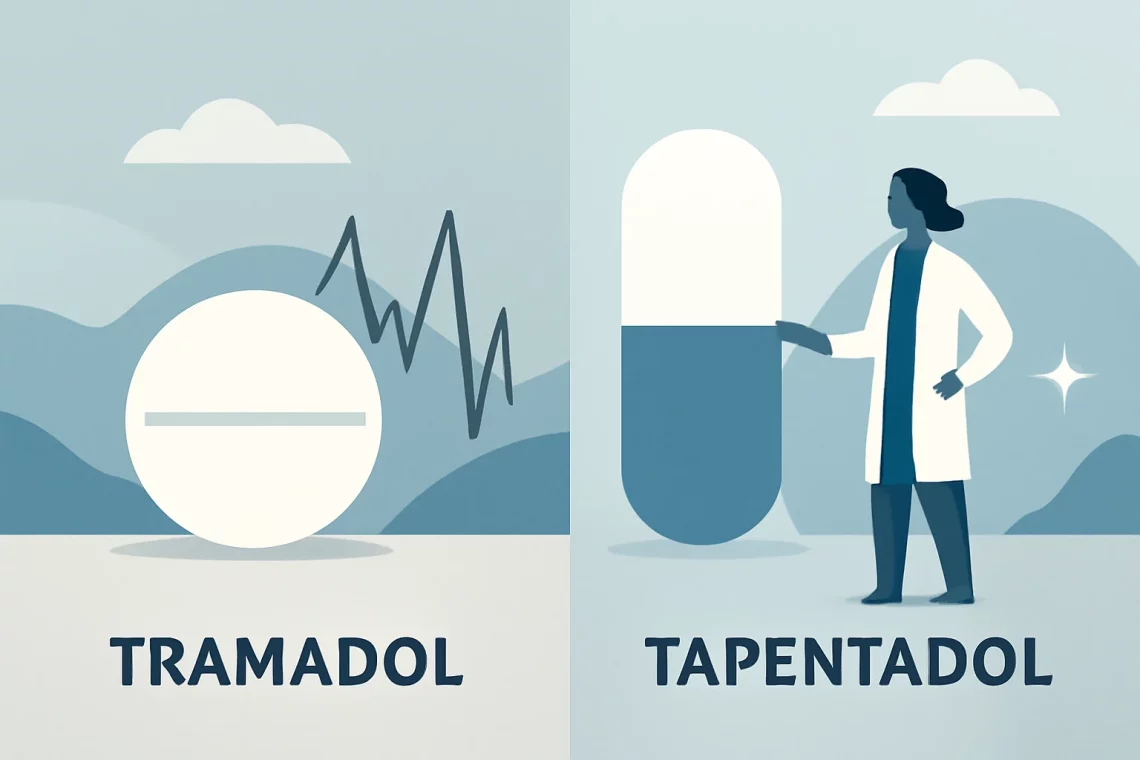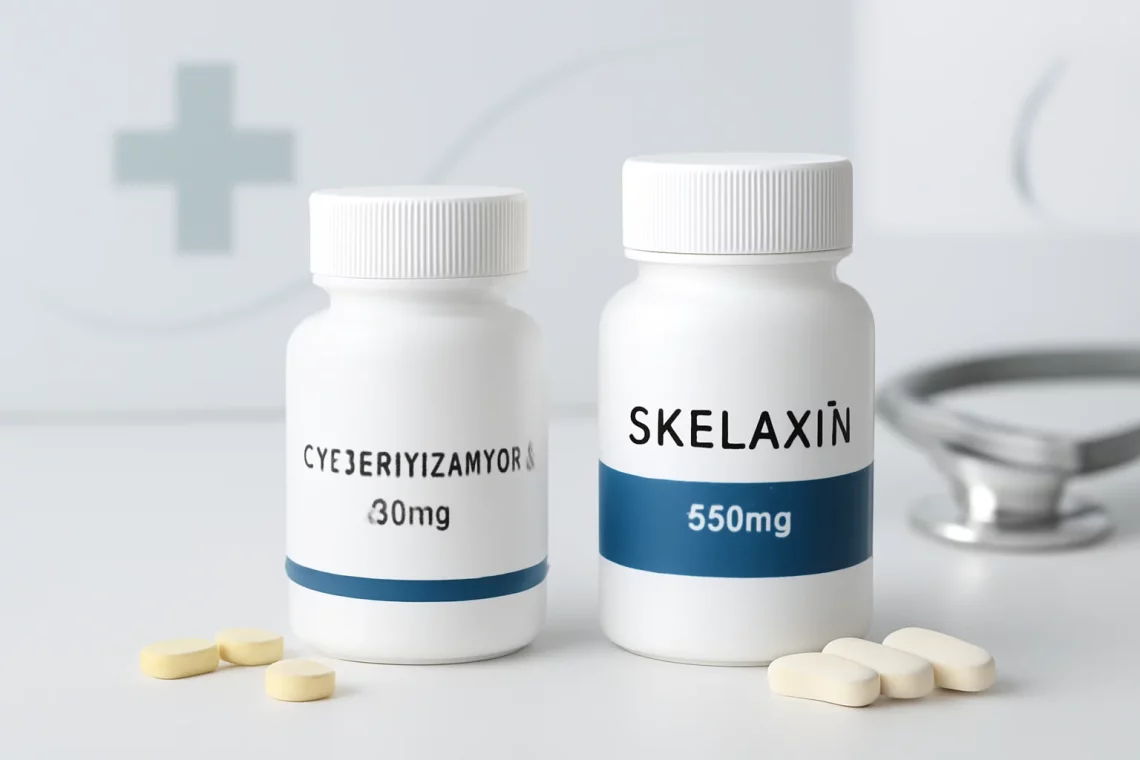-
Fentanyl vs Butrans: Understanding Their Differences and Uses
Fentanyl and Butrans are two powerful medications commonly used in pain management, yet they differ significantly in their composition, application, and effects on the body. As the opioid crisis continues to raise awareness around the use of narcotics, understanding the distinctions between these two substances becomes increasingly vital. Fentanyl, a synthetic opioid, is known for its potency and rapid onset of action. It is often prescribed for severe pain, particularly in cancer patients or those recovering from surgery. However, its high potential for addiction and overdose has made it a controversial choice in the realm of pain management. On the other hand, Butrans, which contains buprenorphine, is a partial opioid…
-
Tramadol vs Tapentadol: Key Differences in Pain Management Options
Tramadol and tapentadol are two medications commonly prescribed for the management of moderate to severe pain. Both drugs belong to a class of medications known as analgesics, but they differ in their chemical structure, mechanism of action, and side effect profiles. As pain management continues to be a critical aspect of healthcare, understanding the nuances between these two medications can help patients and healthcare providers make informed decisions. The rise in opioid prescriptions has sparked discussions regarding the safety and efficacy of various pain management options. Tramadol, often viewed as a less potent alternative to traditional opioids, has gained popularity due to its lower risk of addiction. Tapentadol, on the…
-
Cyclobenzaprine vs Valium: Understanding Their Differences and Uses
Cyclobenzaprine and Valium are two medications that are often discussed in the context of managing muscle spasms and anxiety. As individuals seek effective solutions for various health issues, understanding the differences, uses, and potential side effects of these medications becomes essential. Both drugs have unique mechanisms of action and are prescribed for different conditions, yet they can sometimes be confused due to their similar effects on the body. In this landscape of pharmaceuticals, it is crucial for patients and healthcare providers alike to make informed decisions regarding treatment options. Knowledge of how these medications interact with the body, their indications, and contraindications can significantly influence patient outcomes. As we delve…
-
Meloxicam vs Piroxicam: Which Anti-Inflammatory Drug is Better?
Meloxicam and piroxicam are two widely used nonsteroidal anti-inflammatory drugs (NSAIDs) that play significant roles in the management of pain and inflammation. Both medications are commonly prescribed for conditions such as arthritis, muscle pain, and other inflammatory disorders. Their effectiveness in alleviating pain makes them popular choices among healthcare providers, but they differ in their chemical structures, mechanisms of action, and potential side effects. Understanding these differences is crucial for patients and healthcare professionals alike, as it can influence treatment decisions and patient outcomes. In the realm of pain management, the choice between meloxicam and piroxicam is often dictated by the specific needs of the patient, including their medical history,…
-
Meloxicam vs Ibuprofen: Which Pain Reliever Is Right for You?
In the realm of pain relief and inflammation management, Meloxicam and Ibuprofen are two commonly used nonsteroidal anti-inflammatory drugs (NSAIDs) that serve as effective options for many individuals. Both medications are prevalent in treating various conditions, including arthritis, muscle pain, and other inflammatory disorders. While they share similarities in their mechanisms of action, their differences can significantly influence their suitability for different patients and conditions. Understanding these distinctions is crucial for making informed decisions about pain management and overall health. Meloxicam, often prescribed for chronic inflammatory conditions, is known for its long half-life, allowing for once-daily dosing. On the other hand, Ibuprofen is a familiar over-the-counter option that is widely…
-
Cyclobenzaprine vs Skelaxin: Comparing Muscle Relaxants for Pain Relief
Cyclobenzaprine and Skelaxin are both widely used medications in the realm of muscle relaxants. These medications play a crucial role in alleviating muscle spasms and discomfort, often resulting from injuries, overexertion, or conditions such as fibromyalgia. Understanding the differences, benefits, and potential side effects of these drugs is essential for patients considering their use. The choice between Cyclobenzaprine and Skelaxin can significantly influence treatment outcomes, as each medication has its unique properties and indications. As muscle relaxants, they act on the central nervous system to reduce muscle tension and enhance mobility, which can be particularly beneficial in rehabilitation settings. Both medications have their advocates and specific circumstances under which they…
-
Diclofenac vs Meloxicam: Which Pain Reliever Is Right for You?
Diclofenac and meloxicam are two commonly used non-steroidal anti-inflammatory drugs (NSAIDs) that play a significant role in managing pain and inflammation. These medications are often prescribed for conditions such as arthritis, muscle pain, and various forms of acute pain. While both diclofenac and meloxicam share similar mechanisms of action—primarily inhibiting cyclooxygenase enzymes to reduce the production of prostaglandins—they differ in various aspects, including their pharmacokinetics, usage, and side effects. Choosing between these two medications can be challenging, especially for patients who are looking for effective pain relief without compromising their health. Understanding the distinctions and similarities can empower patients and healthcare providers to make informed decisions tailored to individual needs.…
-
Tramadol or Codeine Which Pain Relief Option Is Right for You
Tramadol and codeine are two commonly prescribed medications that belong to the class of opioids. They are primarily used for pain management, but they have distinct differences in their formulations, efficacy, side effects, and potential for abuse. Understanding these differences is vital for patients and healthcare providers alike, as they navigate the complexities of pain treatment. The growing concern over opioid misuse has led to increased scrutiny of these medications, making it essential to provide accurate information about their uses and risks. Both tramadol and codeine can be effective in treating various types of pain, yet they also carry the potential for dependency and other adverse effects. This article aims…
-
Tramadol vs Codeine: Which Pain Relief Option is Right for You?
Tramadol and codeine are two commonly prescribed medications used to manage pain. While they belong to different classes of drugs, both are effective in alleviating moderate to severe discomfort. Understanding the differences and similarities between these two medications is crucial for patients and healthcare providers alike. The choice between tramadol and codeine can significantly impact a patient’s pain management strategy, as well as their overall health and well-being. With the rise of chronic pain conditions, the demand for effective analgesics has increased, making it essential to explore the unique properties of each medication. Tramadol, a synthetic opioid, works by altering the way the brain and nervous system respond to pain.…
-
Tramadol vs Diclofenac: Understanding Pain Relief Options
Tramadol and diclofenac are two commonly used medications that serve distinct purposes in pain management. While both drugs are effective in alleviating discomfort, their mechanisms of action, side effects, and appropriate usage differ significantly. Understanding these differences can help individuals make informed decisions about their pain management options. Tramadol is an opioid analgesic, which means it works on the central nervous system to alleviate pain. It is often prescribed for moderate to severe pain and can be used in various conditions, from post-surgical pain to chronic pain disorders. On the other hand, diclofenac is a non-steroidal anti-inflammatory drug (NSAID) that primarily reduces inflammation and alleviates pain related to conditions such…






































